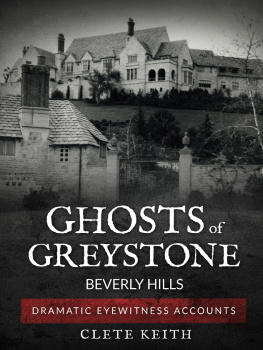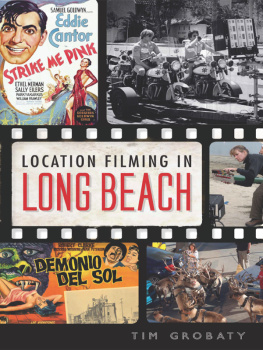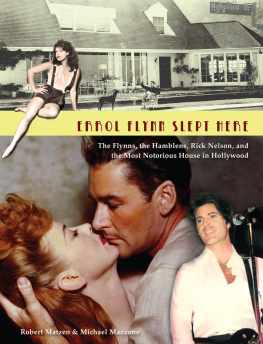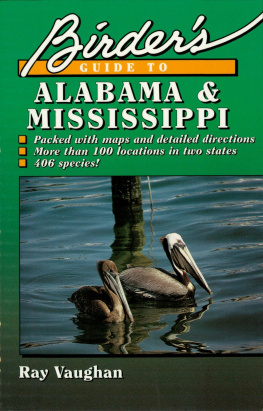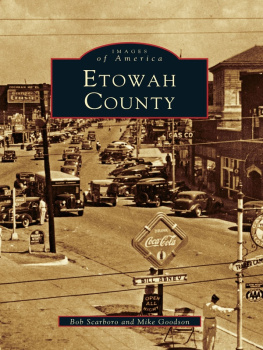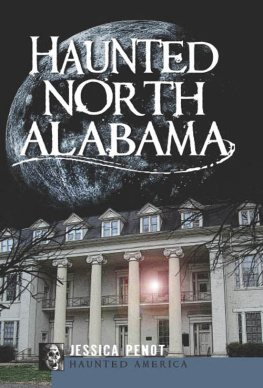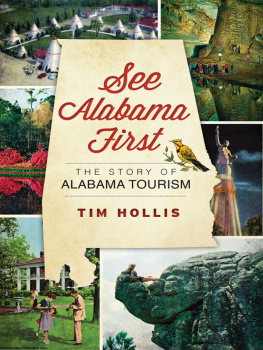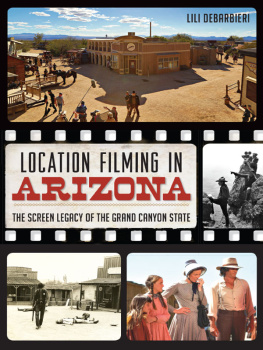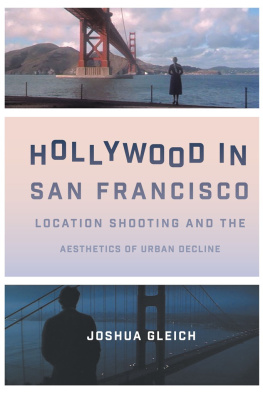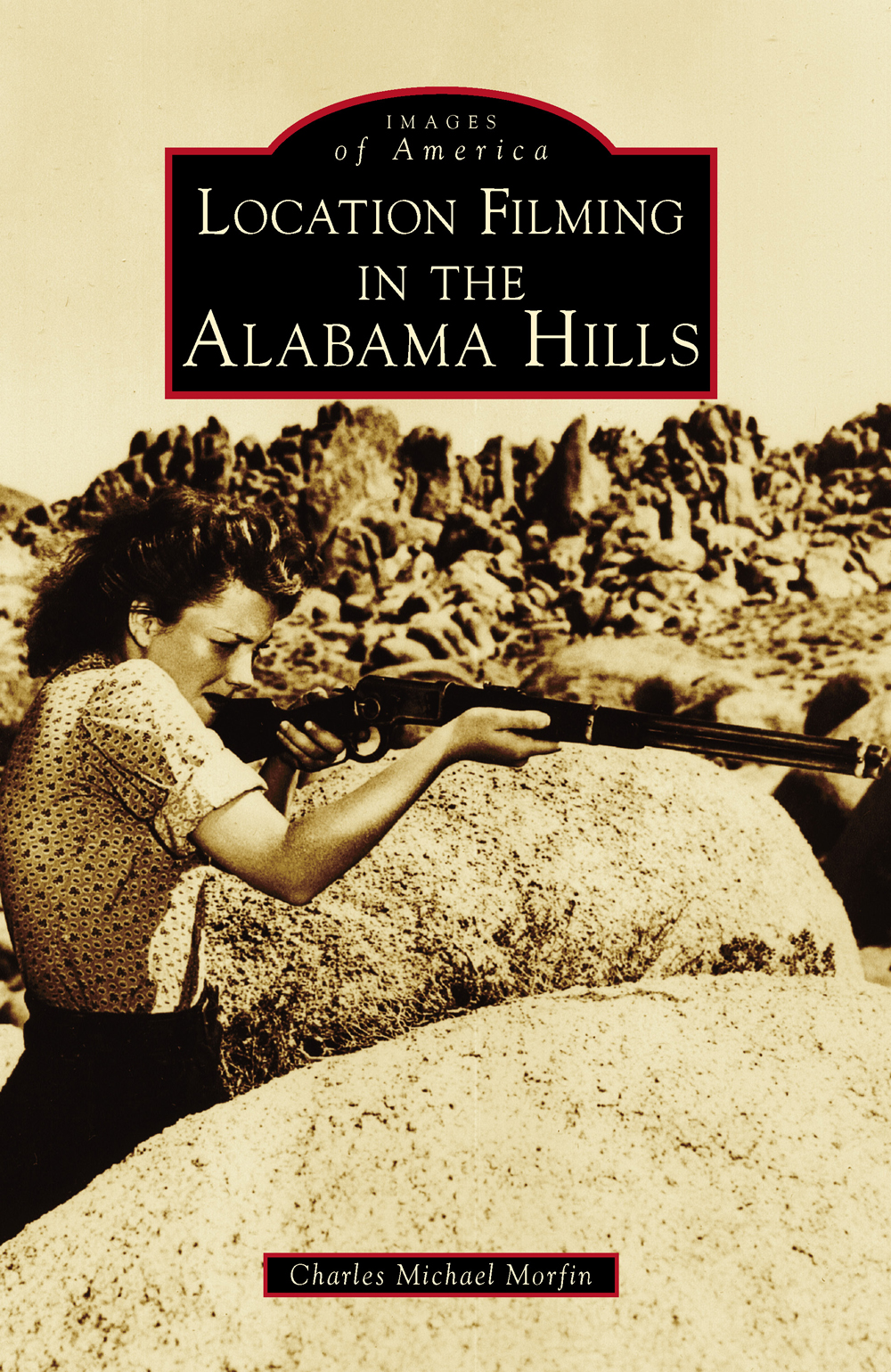
IMAGES
of America
LOCATION FILMING
IN THE
ALABAMA HILLS
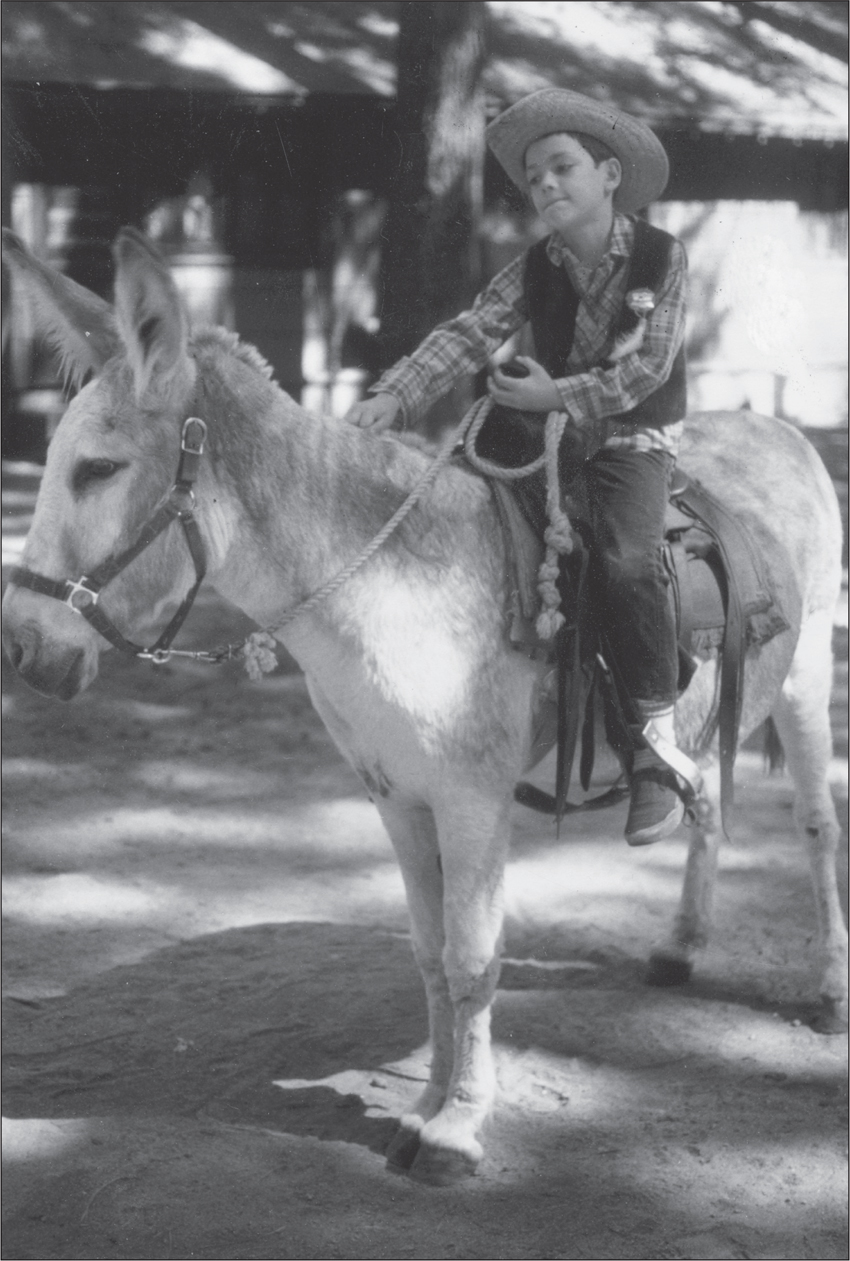
The Alabama Hills provide a wonderful place to pretend to be in the movies, chasing the bad guys, saving the damsel in distress, charging up the hill, or even riding a horse or a mule. Shown here is the author in 1981 at eight years old, along with his friend Brandy. (Authors collection.)
ON THE COVER: This scene shows Anne Baxter aiming a Winchester lever-action rifle from atop an Alabama Hills filming location for Yellow Sky (1948), a 20th Century Fox production. (Courtesy of Melissa Galt.)
IMAGES
of America
LOCATION FILMING
IN THE
ALABAMA HILLS
Charles Michael Morfin

Copyright 2014 by Charles Michael Morfin
ISBN 978-1-4671-3131-5
Ebook ISBN 9781439647479
Published by Arcadia Publishing
Charleston, South Carolina
Library of Congress Control Number: 2013947988
For all general information, please contact Arcadia Publishing:
Telephone 843-853-2070
Fax 843-853-0044
E-mail
For customer service and orders:
Toll-Free 1-888-313-2665
Visit us on the Internet at www.arcadiapublishing.com
To my beautiful pretties, Doughgirl, with whom I found many locations... my grandparents, who taught me life is learned through film... the entire movie industry and the timeless efforts that goes into making movies... editors such as Jared Nelson and publishers such as Jeff Ruetsche at Arcadia Publishing, who grant the first opportunity and a dream come true for authors with a passion to write. Lastly, I humbly dedicate this work to a talented, hard-working actress from Brooklyn. She cherished filming, was always on time to set, and was born by the name of Ruby Stevens. She now rests in peace forever among the beauty of the Alabama Hills.
CONTENTS
ACKNOWLEDGMENTS
I would to like thank the numerous people who helped make this book to a reality. The late, great Dave Holland and his knowledge of movies fueled my passion, as did Michael Holland and Melody Holland-Ogburn, who embraced my story. Thanks to Robert Sigman, who supported me through this venture, and my editor, Jared Nelson, who was patient and who along with Arcadia gave me the opportunity. Thanks to my parents, my grandparents, my great-aunt and -uncle Ann and John Gillanders, my brother David M. Morfin and pets Akira, Ichiro, Doughgirl, Ernies, Koda, and Simba. Thanks to my beloved friend Jeff Finney and his brother Jerry Finney, who stayed up late, often to talk about films. Thanks also to Carrie-Anne Christian, whom I will always love unconditionally. Thanks to the people of Lone Pine who shared their stories, Kathleen from the Lone Pine Chamber of Commerce, the friendly staff at Margies Merry-Go-Round, Jakes Saloon, and the entire staff at the Dow Villa Hotel. I wish to personally thank Melissa Galt-Baxter; Manuel Ruiz; the California Highway Patrol and Ofc. Bryan Duncan; Elaine Delaney and Marty from Aberdeen; John Girodo and Sue Slutzky from Hollywood Heritage; Margot Gerber Barry and staff at the Egyptian Theatre; American Cinematheque; Jamie and staff at the Pig n Whistle; Stan and Lynn Fedderly; Vince and Chao at the Formosa Caf; Stephen Blackheart at Edendale 56; Eric Heisner; Joe Haney; Jim Phillips-Arbuckle; Mrs. Bates from the Hopalong Cassidy Museum; Cattle Headquarters; Arts Camera; Jim Hastings; Jay Dee Witney; Mike Johnson; Lone Pine Film Festival members and founder Kerry Powell; Chris Langley; and the entire Lone Pine Film History Museum staff, including Judyth, Jackie, Karen, and Susan. Thank you to Maureen Holmes, Lydell Romero, and Leon Boyer of the Inyo County Sheriffs Office for the local town stories. Thanks to the Los Angeles Department of Water and Power, the Bureau of Land Management, Inyo County, and the Forest Service folks with Smokey the Bear. Lastly, thanks to the Native Americans and their stories, which were often written on rocks, thus becoming the first books of the Alabama Hills.
Unless otherwise noted, all images are courtesy of the authors collection.
INTRODUCTION
Location filming has always intrigued the moviegoer. When sitting at home or at a theater, one might say, Where is that place? One might wonder, Where is that giant boulder my favorite actor is standing on? For some, it becomes a destinationthey want to visit and see firsthand where all that movie magic took place. And that place is often the Alabama Hills.
Like director Ridley Scott said while filming Gladiator (2000), there was no other location in the world that could give them that grandeur, not even Malta. That is what has made and continues to make the Alabama Hills such a popular filming location. During Gladiator, it served as the Spanish Alps. The hills became India in 1939s epic Gunga Din, and in Edmond OBrien and Ida Lupinos 1953 film The Hitch-Hiker, they served as Mexico.
The Alabama Hills lie under the majestic and jaw-dropping landscape of the Eastern High Sierras in the Owens Valley. As the afternoon sun slowly sets behind Mount Whitney, the ancient rock formations of the hills change colors and provide breathtaking beauty to fortuitous observers. This scenery resembles the Gobi and Sahara Deserts, Africa, India, Spain, Peru, Argentina, Arizona, Utah, Colorado, Alaska, Mexico, California, and even other planets.
The Alabama Hills are still used as a movie location for directors and is administered by the Bureau of Land Management. They are also a recreational area where visitors can go fishing, rock climbing, and camping and where artists come to sketch or paint spectacular scenery.
This was a very sacred place to the native Paiute, who lived in the area for hundreds of years. They have left evidence of their lives throughout the Owens Valley region. Petroglyphs, bedrock mortars, burial grounds, and obsidian used for tools and weapons can be seen.
Trapper Joseph Reddiford Walker is credited with being the first white explorer in the area. Then, in 1864, Clarence King named Mount Whitney, the highest mountain in the contiguous United States, after his boss, Josiah Dwight Whitney, of the California State Geological Survey.
Clarence King climbed Mount Whitney in 1871, setting the pace for future climbers in the area. Norman Clyde climbed Whitney in 1930 and was commonly referred to by others as the pack who walked like a man because of his ability to carry heavy gear without apparent effort. Clyde ascended more peaks in the Eastern High Sierras than any other climber.
In the early part of the 20th century, climbers and visitors came back to Los Angeles with pictures and stories of these magical Alabama Hills. A movie crew decided to look into the place, and in 1920, Hollywood shot its first movie there. The rest is history.
As viewers of film, readers might remember the Alabama Hills because of Hoppys laugh, Roy Rogerss horse, John Waynes voice, Errol Flynns moustache, the Lone Rangers mask, Genes singing, or perhaps even the cowboy rope tricks and stunts of Tom Mix or Monty Montana. Visitors to the Alabama Hills can attend the Lone Pine Film Festival, held annually on Columbus Day weekend since 1990, to experience the glory of films shot at this historic location.
Throughout these pages, readers will venture through time, viewing images that endure on film and others that have rarely been seen. Some visit the Alabama Hills because of their appreciation for movie-making and to connect with actors of old by standing in the exact spot the stars stood. Others may create permanent footprints by shooting new films to preserve memories of their own.
Next page

